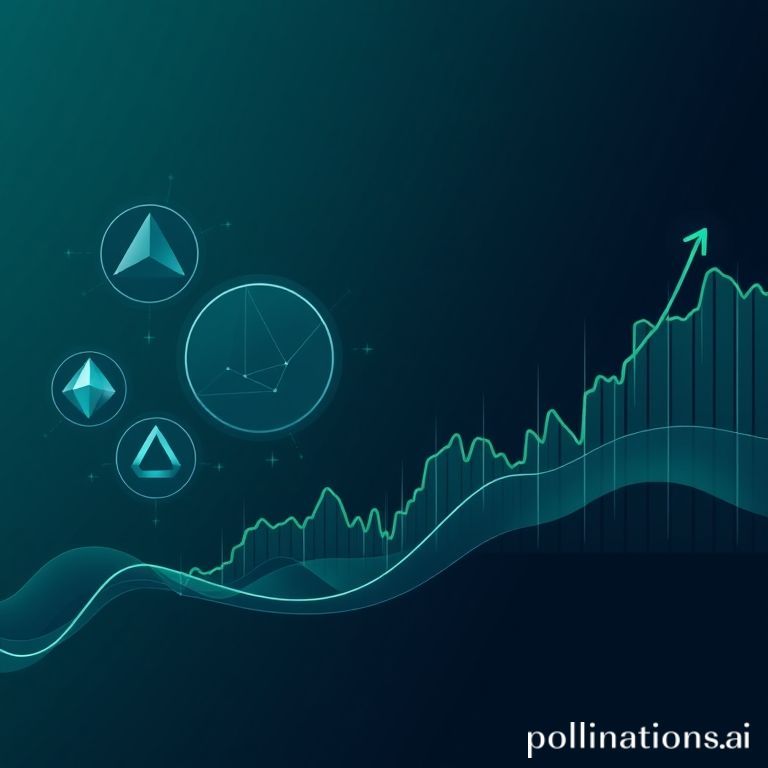
Welcome to the Crypto Corner, your daily dose of insights into the dynamic world of digital assets. Today, we're taking a closer look at two prominent cryptocurrencies: Cardano (ADA) and Chainlink (LINK). Our goal is to help investors navigate the exciting landscape of over 100 cryptoassets available on various platforms by providing a clearer understanding of these key players.
Delving Deeper: Cardano (ADA)
Cardano, launched in 2017 after being founded in 2015, stands out due to its innovative approach to blockchain technology. It operates on a unique proof-of-stake (PoS) consensus mechanism known as Ouroboros. This protocol is meticulously designed to offer exceptional energy efficiency, robust security, and enhanced decentralization, addressing some of the common concerns associated with earlier blockchain models. Unlike energy-intensive proof-of-work systems, Ouroboros allows participants to validate transactions and create new blocks based on the amount of ADA they hold and are willing to "stake," significantly reducing its environmental footprint.
The Cardano network is architecturally built in layers, aiming to provide greater flexibility and scalability. It features a settlement layer for ADA transactions and a computation layer for smart contracts and decentralized applications (DApps). This layered approach facilitates upgrades without disrupting the entire network, ensuring continuous development and innovation. ADA, the native cryptocurrency of Cardano, plays several crucial roles within the ecosystem. It is used to pay for transaction fees, participate in staking to secure the network, and engage in the project's governance, allowing holders to vote on important proposals and shape the future direction of the platform. As an open-source project, Cardano encourages global collaboration, allowing anyone to review, contribute to, and audit its codebase, fostering transparency and community ownership.
Unpacking Chainlink (LINK)
Chainlink, which went live in 2019, addresses a fundamental challenge in the blockchain space often referred to as the "oracle problem." Blockchains, by design, are isolated systems and cannot directly access real-world data outside their network. Chainlink acts as a decentralized oracle network, serving as a secure and reliable bridge that connects smart contracts on various blockchains with external data, events, and traditional payment systems. This capability is vital for the functionality of complex smart contracts that require off-chain information to execute, such as those in decentralized finance (DeFi), gaming, insurance, and supply chain management.
The Chainlink protocol operates through an open-source framework where participants, known as "oracles," are incentivized with LINK tokens to provide accurate off-chain data. When a smart contract requires external data, a request is submitted, and LINK tokens are placed into a smart contract as payment. Oracles then bid to fulfill this request, competing on price and reputation. The winning oracle retrieves the requested data, formats it into a blockchain-compatible format, and submits it to the network. This decentralized approach ensures data integrity and prevents single points of failure, making Chainlink a critical piece of infrastructure for the broader blockchain ecosystem. With the backing of a large community of academic professors and researchers, Chainlink has successfully secured billions of dollars worth of smart contracts, underscoring its reliability and widespread adoption.
The Setup: Cardano (ADA) Chart Analysis
Turning our attention to the market performance of Cardano (ADA), its price action has seen significant volatility, offering both opportunities and challenges for investors. In late 2023, ADA experienced a remarkable surge, climbing from approximately $0.30 to a peak near $1.30. This impressive rally was followed by a period of wide and volatile consolidation, characteristic of assets finding a new equilibrium after a rapid ascent. Eventually, ADA's price retreated below the psychological $1 mark, finding a strong support level around $0.50, which proved to be a critical zone for bulls.
Currently, market participants are closely monitoring the $1 level. This price point is not just a round number but often acts as a significant psychological and technical resistance or support level. If Cardano bulls can muster enough buying pressure to decisively clear and hold above $1, it could signal renewed upward momentum. A successful breakout above this level might pave the way for ADA to retest its previous highs from 2024 and 2023, potentially attracting more investors and increasing trading volume. Conversely, if $1 proves to be a formidable resistance once again, failing to break through could lead to a waning of bullish sentiment. In such a scenario, ADA might experience a pullback, potentially testing lower support levels. Investors should also consider broader cryptocurrency market trends and fundamental developments within the Cardano ecosystem, such as new partnerships or protocol upgrades, as these factors can significantly influence price movements.
Disclaimer:
Please note that due to market volatility, some of the prices may have already been reached and scenarios played out. This article is for informational purposes only and does not constitute financial advice.
